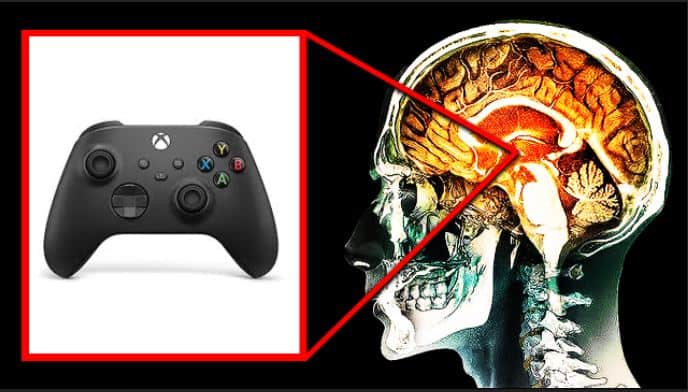
25 Twitch Slang, Emotes and Lingo Explained
If you’re new to Twitch, it can be difficult to follow what’s going on. Even regular users and streamers sometimes struggle to keep up with the latest slang, emotes, and abbreviations. If you’re feeling overwhelmed by the ever-evolving terminology, you’ve come to the right place.
In this article, we explain the most commonly used Twitch lingo to help you communicate confidently with other viewers and streamers. As a global support community for gamers and families, providing jargon-busting guides is all part of our service at Game Quitters.
Common questions about Twitch
Twitch is the go-to streaming platform for gamers and the one we receive the most questions about. Here are some examples of recent queries from confused gamers and parents:
What do you call a Twitch streamer?
As well as being referred to as a streamer, another term to describe someone who broadcasts content on Twitch is a creator.
What are Twitch emotes?
Emotes are small pictures used by viewers and streamers on Twitch chat to communicate instead of using a word or comment.
What does Twitch chat mean?
Twitch chat allows streamers and viewers to converse with each other and build a community on a Twitch channel.
What is the meaning of Twitch in social media?
As a streaming platform for gaming content and other entertainment, Twitch is classed as social media. Users can interact with others using the chat function.
What is a Twitch in English slang?
This is one of the more random questions we’ve received! We assume the enquirer doesn’t understand Twitch. For the full lowdown and how to get started on the platform, check out our Twitch guide.
A-Z of Twitch terminology

Here’s a round-up some of the most popular Twitch terminology to help you fully engage with other users:
AFK – An abbreviation for ‘away from keyboard’ which often appears in Twitch chat to tell others that a viewer or streamer is offline. It’s a term that’s also used on other social media platforms.
Bits – This is the currency used on Twitch: US$1 = 100 Bits. Viewers can donate Bits to their favorite streamers to show their support.
Bot – Good bots (like Moobot and Nightbot) help streamers by moderating the chat and answering basic questions from viewers. Bad bots engage in ‘hate raids’ (see definition below) on streams by spamming racist, sexist, and other vile messages.
BTTV – Short for ‘Better Twitch TV’, BTTV is a third-party browser extension which can be downloaded in order to use custom and animated emotes in chat.
Cheering – A term used to describe sending Bits (the internal currency used on Twitter) to streamers. To donate Bits, type ‘Cheer’ in the chat box along with how much you want to donate, for example, ‘Cheer500’.
Emote – See this question in the section above: ‘What are Twitch emotes?’
EZ – A quick way of saying ‘easy’. It’s sometimes used in a derogatory way to insult another player and let others know that the game was won easily.
F – When the letter ‘F’ appears in chat, it means that viewers are paying their respects if there’s a sad event on the stream. It comes from the popular first-person shooter game Call of Duty, where players were asked to press F in memory of virtual soldiers who had died.
FF – This means ‘failed fight’ and is used to brag or be sarcastic about the result of a game.
Gas – Appears in chat when something is great, for example, ‘that’s gas’.
Hate raid – A situation where anonymous users bombard another user’s chat with insults and abuse.
Hype – When something is ‘hype’ on Twitch it means it’s awesome or cool.
Hype train – A hype train is activated by a spike in contributions to a channel (such as a surge in subscriptions/gift subscriptions or sharing details of subscription renewals in chat) from multiple viewers in a 5-minute period.
IRL – An abbreviation for ‘in real life’, which is used across many digital platforms, not just Twitch.
Jebaited – This is a commonly used Twitch emote to show when someone gets baited or tricked.
Kappa – Used in Twitch chat when someone is being sarcastic or ironic. There’s also a kappa emote, which is a picture of former Twitch employee Josh DeSeno.
LUL – This emote is used to express laughter and features the face of video game reviewer John Bain, known as TotalBiscuit. The LUL emote is the Twitch equivalent of the LOL text term or the laughing emoji.
Mod – Twitch slang for ‘moderator’.
Pwned – Used instead of the word ‘owned’ to say when a player has been beaten, for example. ‘[name of player] has been pwned’. It comes from a misspelling by a Warcraft game designer who accidentally put ‘pwned’ rather than ‘owned’ on a map design (‘o’ and ‘p’ are next to each other on a QWERTY keyboard).
Raid – There are positive raids and negative ones on Twitch. A positive raid is when a high-profile streamer urges viewers to go to another streamer’s channel once their stream has ended. A negative raid (known as a ‘hate raid’) is when a steamer encourages their followers to attack another streamer’s channel.
Rerun – Previously called a ‘vodcast’, a rerun is when a stream is rebroadcast on a channel and is not live. Viewers can still use live chat while the rerun is showing.
Stream sniping – An underhand tactic sometimes used in MMO games on Twitch where another player is also watching the live stream to gain a competitive advantage over opponents.
Viewbot – A bad bot designed to artificially inflate a streamer’s live view count to make their stats look better than they actually are to attract advertisers, sponsors, viewers, and followers.
Whisper – This feature allows one user to send a private message to another user that no one else on the platform can see.
YOLO – An abbreviation for ‘you only live once’. It’s often used on Twitch (and other social networks) to urge someone to do something risky or exciting.
Need help?

Are you reading this article because you – or someone you know – can’t stop watching or streaming Twitch? If it’s starting to become problematic, we can help.
At Game Quitters, we’re experts at supporting people who are addicted to Twitch and anyone who is also struggling with gaming disorder.
If you don’t know where to turn, take the first step and learn a new 3-step process that works even if your gamer doesn’t want to stop – get free access now.
